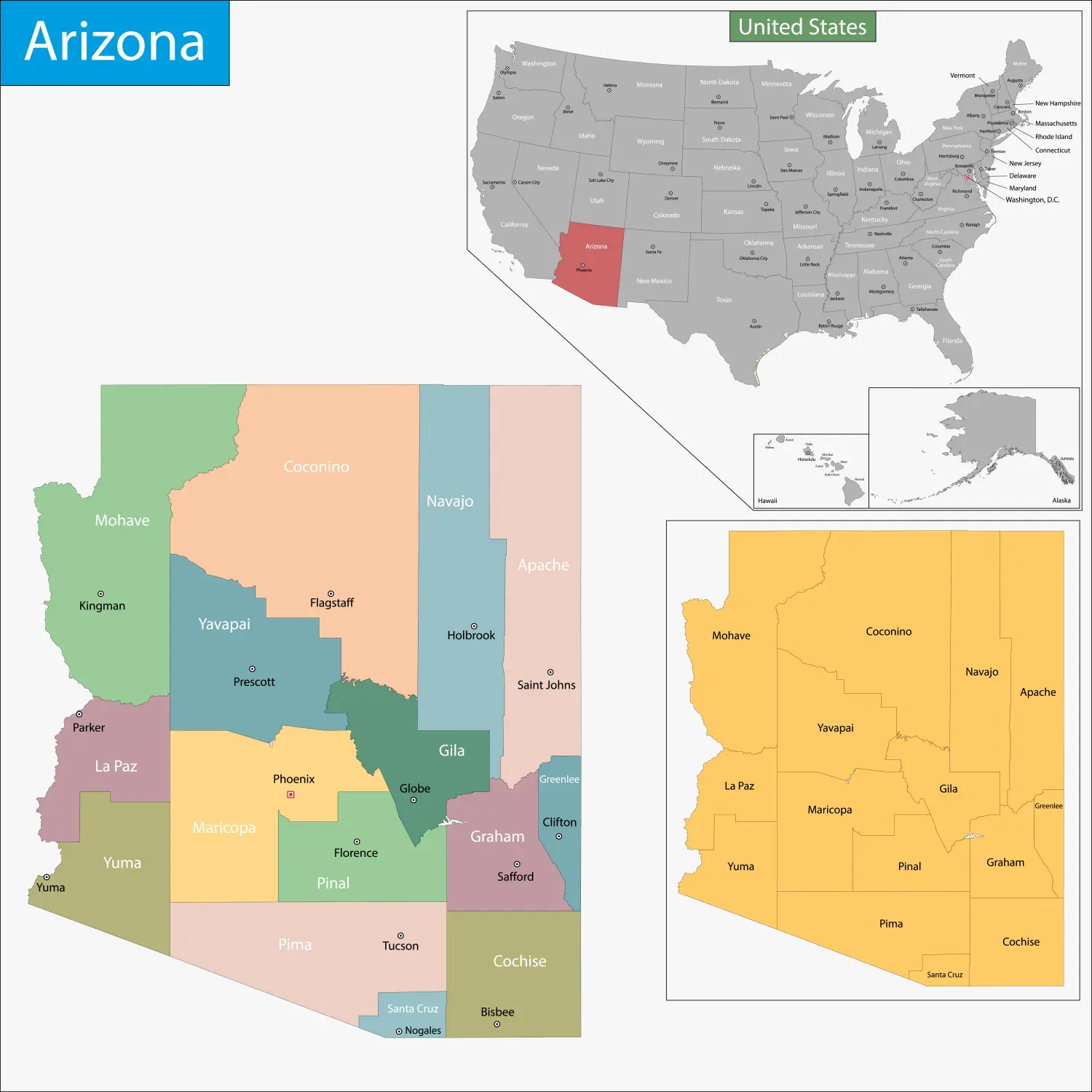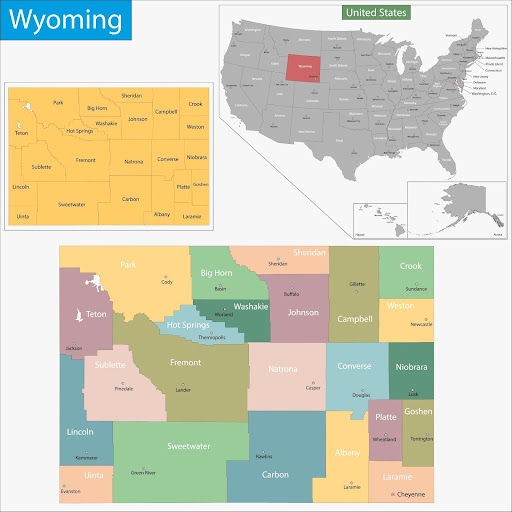Table of Contents
Arizona has diverse landscapes ranging from the Sonoran Desert to the ponderosa pine forests of the Mogollon Rim. This creates a complex and dynamic fire environment. The state's varied topography, coupled with its arid climate, presents unique challenges for wildland fire management.
For fire investigators, understanding Arizona's specific fire behavior, agency roles, and response protocols is important. In this guide, we provide an in-depth look at Arizona's wildland firefighting infrastructure, training and volunteering opportunities, and live incident updates.
Live Incident Updates & Maps
Stay informed about active wildfires in the state through this live incident update tracker.
State Overview
Arizona's geography is complex, and this means the fire behavior here is also challenging. The state encompasses a range of ecosystems, from lowland deserts to high-elevation forests, each presenting distinct wildland fire challenges.
In the north, the Coconino and Kaibab National Forests are characterized by dense coniferous forests, where fires can spread rapidly through accumulated fuels. Central Arizona's Mogollon Rim features steep terrain and mixed vegetation, complicating suppression efforts. The southern deserts, with their sparse vegetation and high temperatures, can experience fast-moving grass fires.
According to the Arizona Department of Forestry and Fire Management (DFFM), the state provides fire protection to 22 million acres of state and private lands. The DFFM also offers suppression services on other land jurisdictions through cooperative agreements.
Wildfire Season Timeline
Arizona's wildfire season has become a year-round concern, with peak activity typically occurring from mid- to late June and early July. However, fires can ignite as early as late February or March, depending on conditions like snowpack and moisture levels. However, recent trends indicate an earlier start due to low snowpack and early snowmelt. In 2025, the fire season began as early as March in some regions.
The state's fire season can be divided into two distinct periods:
- Pre-Monsoon Season (May–June): Characterized by high temperatures, low humidity, and dry fuels, leading to increased fire activity.
- Monsoon Season (July–September): While monsoon rains can reduce fire risk, lightning strikes associated with storms can ignite new fires.
Understanding these seasonal patterns is important for fire investigators when analyzing fire causes and behavior.
Key State Agencies Involved
Wildland fire response in Arizona is a collaborative effort involving state, federal, and local entities. Each agency has defined responsibilities, but they often work together to manage fire incidents effectively.
- Arizona Department of Forestry and Fire Management (DFFM): The lead state agency for wildland fire management. DFFM oversees fire detection, suppression, prevention programs, and public education. The Arizona Department of Forestry and Fire Management (DFFM) provides fire protection to 22 million acres of state and private lands. It also offers suppression services in other land jurisdictions through cooperative agreements. The agency maintains in-house fire command and firefighting capabilities, including engines, an inmate wildland fire hand crew program, and the Phoenix Crew, a Type 2 IA hand crew.
- Bureau of Land Management (BLM) Arizona Fire Program: Manages fire suppression on federal lands and uses fire as a tool to improve ecosystem health.
- U.S. Forest Service (USFS): Oversees fire management in national forests, such as the Tonto, Coconino, and Kaibab, and collaborates with other agencies for coordinated response.
- Bureau of Indian Affairs (BIA) Division of Wildland Fire Management: Provides wildland fire protection and ecosystem improvement to federal trust lands held in trust for federally recognized Tribes and individual Indians.
Local Wildland Firefighting Resources
It’s important to understand which agencies operate in the state and the resources they have for efficient fire investigation. Here’s a closer look at Arizona's firefighting infrastructure.
List of Local/State/Federal Fire Response Agencies
Contact Numbers and Emergency Links
Training & Volunteering
Arizona offers various training programs and volunteering opportunities for those interested in wildland firefighting.
NWCG-Approved Academies and Centers
- Arizona Wildfire and Incident Management Academy (AWIMA): A week-long training venue offering over 45 classes in all levels of wildland fire and incident management training. The academy is located in Prescott, Arizona.
- Department of Forestry and Fire Management (DFFM) Training: Provides various wildland fire courses, including online and blended courses, as well as annual refreshers.
Volunteer and Seasonal Training Opportunities
The DFFM offers various wildland fire courses, including online and blended options, as well as annual refreshers. They also provide training calendars and priority trainee programs in collaboration with partners. Many VFDs collaborate with state agencies for joint operations and training exercises.
Additionally, the Bureau of Land Management (BLM) in Arizona recruits applicants for seasonal, emergency wildland firefighter positions, offering training and employment opportunities for individuals interested in seasonal firefighting roles.
Stay Updated About Arizona’s Wildland Fire Landscape
Every fire season in Arizona is different. One year, it’s dry lightning in the high country. Next, it’s fast grass fires racing across the Sonoran flats. For fire investigators, that volatility comes with the job.
Understanding the landscape means more than knowing where the fires start. It’s knowing who’s first in, what resources are rolling out, and how jurisdiction shifts from tribal to state to federal in a single afternoon.
Use this guide as your baseline, but stay plugged in. Check the incident maps, review dispatch logs, and keep evolving.
FAQs
How to Report a Wildfire in Arizona?
If you spot a wildfire, immediately call 911. Additionally, you can report fires to the Arizona Interagency Dispatch Center at 1-800-309-7081. Prompt reporting is crucial for rapid response and containment.
Can I Do a Controlled Burn in Arizona?
Yes, but with regulations. Before conducting a controlled burn, you must obtain a burn permit from the Arizona Department of Forestry and Fire Management. Permits are typically required during the fire season, which begins on May 1, but may start earlier depending on conditions. Contact your local DFFM office or visit dffm.az.gov for more information.










